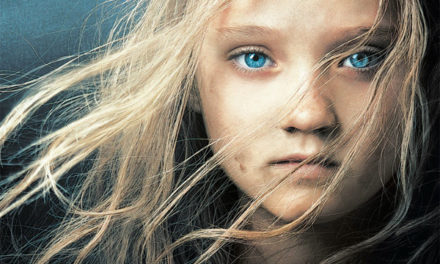During a time when Netflix viewers are largely confined to their living rooms, who wouldn’t want to watch a show that invites us to spontaneously leave our hometowns and start a new life in the world’s most romantic city? However, Darren Star’s Netflix original series, “Emily in Paris,” causes more eye-rolls than excitement. The 10-episode romantic TV drama is like an undercooked croissant: impossibly fluffy and gooey, and far from the best that France has to offer.
“Emily in Paris” follows Emily (Lily Collins), a perky, bright-eyed young professional who is sent to Paris in place of her boss, who encounters an unexpected pregnancy. Emily meets her aggressively-stereotyped coworkers at her new firm, Savoir, befriends a fellow foreigner, Mindy (Ashley Park), and tries not to fall in love with her neighbor, Gabriel (Lucas Bravo). The only thing in Emily’s way is her confounding inability to translate her American experience to the Parisian lifestyle. Insulting everyone from high-end fashion designers to local chefs, Emily’s endless faux-pas cause even more second-hand embarrassment than her questionable fashion choices.
Beyond this Achilles’ heel, Emily’s cultural adjustment appears relatively blithe. She updates her Instagram profile more than a study abroad student, spends a bottomless supply of euros at French boulangeries and gets involved with exclusively white and emotionally-unavailable men. And for all the times she flippantly disregards the advice of the French to pursue her own stubborn, American way? C’est la vie, cherie!

Emily (Lily Collins) snaps a selfie for her Instagram account moments after moving into her new Parisian apartment. / Courtesy of Stephanie Branchu/Netflix
As a protagonist, Emily possesses a distinct je-ne-sais-quoi that can only be summarized as an intriguing repulsion. Emily never has a bad hair day —- even during her regular runs along the banks of the Seine. She can even pull off hats! (Half of the time, at least.) Beyond always looking put-together, Emily possesses an admirable sense of determination to belong in her new city. Her tactics to make friends may be aggressive, but her dogged earnestness makes her almost relatable. After all, we all once arrived in a new world as bright-eyed, Emory first-years who were determined to make this campus our home. However, we realized much sooner that our new world wouldn’t be accommodating after our orientation group left us behind on the second day of classes.
Like Emily, the show’s side-characters are equally as magnetic and flawed. “Emily in Paris” appears to create characters by checking off items on a list of tropes: the office comedian! The aloof boss with a secret soft spot! The hot boy-next-door! The result is a plethora of entertaining and suspiciously attractive individuals who lack the originality that would grant them an opportunity to truly shine. Even more problematic, however, is the show’s absence of diversity. “Emily in Paris” boasts only two non-white characters: Emily’s best friend, Mindy, and her co-worker, Julien (Samuel Arnold). Beyond Mindy’s developing singing career, the main point of the characters is to provide comic relief in the form of quippy remarks to Emily about Parisian life. Despite receiving praise for its escapism, the absence of BIPOC representation in the casting grounds us back to reality to ask when we will stop uplifting exclusively white narratives in film and media.
Emily’s bubblegum fantasy version of Paris also lacks necessary dimensionality. While “Emily in Paris” spends much of its screen time panning over Paris’ idyllic skylines, it fails to portray the authentic struggles of its population. Many Parisians live in poverty, with an average cost of living that is 500 euros higher than the average salary. The city contains 44% of the French homeless population, out of which 38% are women. In 2020, the city has known special hardship, with over 10,000 of its inhabitants hospitalized for coronavirus and a new lockdown imposed mere days after the show’s release date. During such devastating times, Emily’s problems of being shunned by a famous fashion designer or failing to book an expensive restaurant seem tone-deaf.
Yet, while “Emily in Paris” certainly is a naive portrayal of a world so fraught with inequalities, its absence of real-world difficulties provides viewers in 2020 a breath of fresh air. For 10 blissful 30-minute increments, we are able to pretend that our biggest problems are how Emily will pitch her social-media marketing campaigns to yet another successful French celebrity (and which guy she’ll go out with afterward) while the coronavirus pandemic, upcoming election and general 2020 panic melt into the background. In light of my qualms, “Emily in Paris” still makes the viewer want to find a Parisian apartment with a view, walk through cobblestoned arrondissements and learn how to style a beret (maybe). In a year that joie de vivre has felt so limited, we can hardly blame ourselves.
Grade: F+
Abby Williams (22C) is from Pennsylvania and the Netherlands, majoring in English literature. Outside of the Wheel, she writes for a book blog named Paperback Paris, serves at Bread Coffeehouse and writes for Emory in Via. She loves going on long walks during sunset, trying new baking recipes, drinking coffee with honey and cinnamon and cuddling with her Cavalier King Charles Spaniel, Skittles. Contact Williams at abby.williams@emory.edu.






